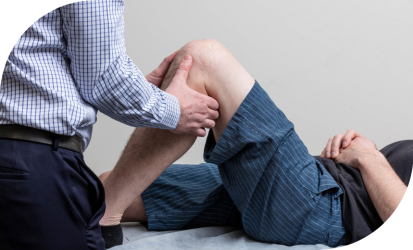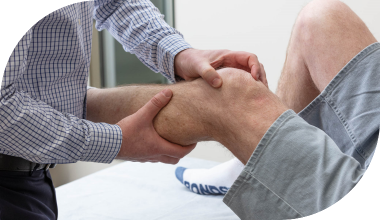Sports Injuries
Sports injuries encompass a wide variety of musculoskeletal conditions that result from our sporting and exercise related activities. Injuries may result from an acute episode leading to conditions such as fractures, dislocation or subluxation of joints, ligament sprains or muscle tears. More chronic situations include overuse type injuries such as tendonitis.


Treatment and diagnosis
When an acute injury occurs, the long-held first aid principle of R.I.C.E. (Rest, Ice, Compression and Elevation) still applies. This means that the sport or activity is ceased. Ice or cold packs should be applied over the area of maximum pain and swelling. This should be applied for 20 minutes and several times a day. Compression can be applied with woven or elastic bandages, which limits the amount of swelling that occurs. Elevation of the injured part also helps to reduce swelling. Ideally, the body part should be held above the level of the heart to improve venous return and therefore encourage the swelling to be reabsorbed.
Following initial RICE treatment, it is important to make a diagnosis so that appropriate treatment can be organised. This requires a detailed history, examination and quite often radiological tests. Plain xrays (radiographs) are useful to rule out fractures and dislocations. More detailed information relating to soft tissue structures and joint surfaces may be best seen on magnetic resonance imaging (MRI). Occasionally Computed Tomography (CT) or Ultrasound (US) may have a role.
Dr Woodbridge will help you to arrange the most appropriate tests for your condition.
Treatment for acute injuries may vary depending on the type of structure involved and the severity of the injury. Treatment options may include immobilization with splints or casts, physiotherapy, medications (paracetamol and Non-steroidal Anti-Inflammatory Drugs), surgery and activity modification. It is important to present to your doctor early as some conditions that require surgery may be best performed in the early post injury period.


Chronic Injuries
Chronic over-use injuries may result from sports or exercise. Examples of these conditions include tendonitis, bursitis, fasciitis, impingement and stress fracture. The causes of these presentations are often multi-factorial, and may involve over training, poor technique, abnormal alignment or biomechanics, muscle imbalance and tissue degeneration.
Treatment generally aims to relieve the symptoms and address the underlying cause of the problem. Treatment options may include rest or activity modification, medications, physiotherapy or other allied health treatment. Other treatments include taping, splinting, orthotics, injection treatments (cortisone or platelet-rich plasma) or surgery.
Dr Woodbridge is well placed to oversee your recovery as he has training in both orthopaedic surgery and physiotherapy.
